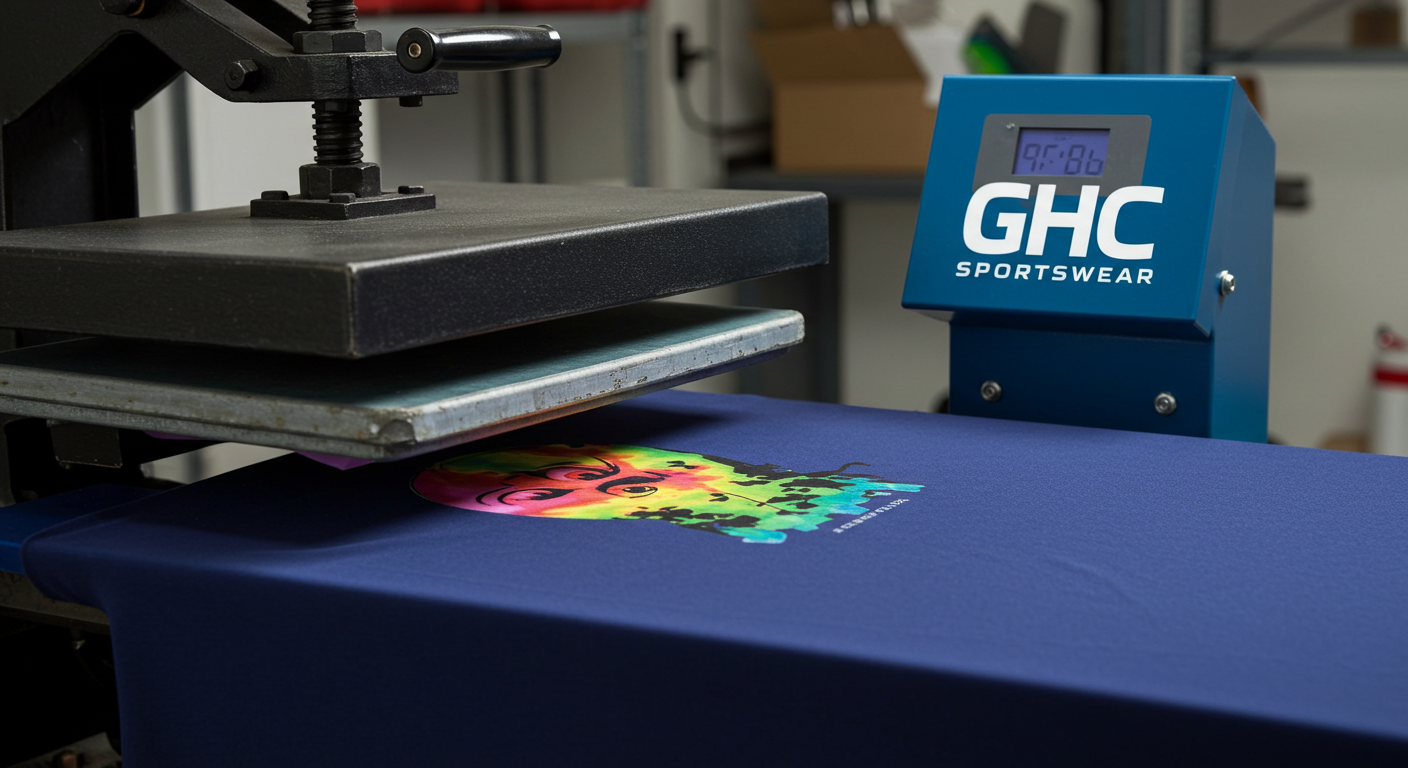
Sublimation printing has become a leading technique in custom apparel, known for producing vibrant and long-lasting designs on various fabrics. This method allows intricate, full-color designs to be transferred onto garments, resulting in prints that are both durable and visually striking. In this guide, we’ll delve into the sublimation process, its benefits, the ideal fabrics for this method, and when to use it for your custom apparel projects.
What is Sublimation?
This process uses heat to transfer dye directly into fabric fibers. Unlike other methods that apply ink on top of the fabric, sublimation embeds the dye within the material, making the design part of the fabric itself. This results in a highly durable print that is resistant to fading, cracking, or peeling.
How Does It Work?
The process involves several key steps:
- Design Creation: It starts with a digital design, printed onto special transfer paper using specific inks.
- Transfer Preparation: The printed transfer paper is placed on the fabric, usually polyester or a polyester blend.
- Heat Pressing: The fabric and transfer paper are placed under a heat press, where temperatures around 400°F (204°C) turn the dye into gas, allowing it to bond with the fabric fibers.
- Cooling and Peeling: Once the fabric cools down, the transfer paper is peeled away, revealing a vibrant, full-color design that has become part of the fabric.
Benefits of This Method
1. Vibrant, Full-Color Designs
This technique excels at producing vivid, full-color designs with a high level of detail, making it perfect for printing complex images, gradients, and patterns.
2. Durability
Since the dye is embedded within the fabric, these prints are incredibly durable. The design is resistant to fading, cracking, or peeling, even after many washes, making it ideal for activewear and other high-use garments.
3. No Minimum Order Requirement
This process doesn’t require screens or stencils, making it cost-effective for small orders or one-off custom designs. This flexibility is particularly beneficial for small businesses, personalized gifts, or limited-edition runs.
4. All-Over Printing Capabilities
This method allows for “all-over printing,” meaning designs can cover the entire garment surface. This is ideal for creating custom t-shirts, jerseys, and other apparel with large, continuous designs.
5. Eco-Friendly Process
The process uses water-based inks that are free from harmful chemicals and solvents, making it an eco-friendly printing method. This reduces the environmental impact of custom apparel production.
Best Fabrics for This Technique
This printing method works best on fabrics with a high polyester content. Polyester fibers bond with the dye, ensuring vibrant colors and durable designs. Common fabrics include:
- 100% Polyester: Offers the most vibrant and long-lasting results.
- Polyester Blends: Fabrics that are at least 65% polyester can also be used, though the colors may be slightly less vibrant than on 100% polyester.
- Polyester-Coated Materials: This method can also be used on polyester-coated items such as mugs, phone cases, and mousepads, showcasing its versatility beyond just fabrics.
When to Use This Technique
This method is ideal for custom apparel projects, especially when high-quality, durable designs are required. It’s perfect for:
- Sportswear and Activewear: The durability and vibrant colors make it perfect for sportswear and activewear, which require frequent washing.
- All-Over Print Designs: Ideal for apparel with all-over prints or designs that cover the entire garment.
- Personalized and Small-Run Orders: Great for personalized gifts, limited-edition items, or small runs of custom apparel.
- Complex, Multi-Color Designs: This technique excels at producing detailed, multi-color designs with gradients and intricate patterns.
Challenges
1. Fabric Limitations
This process is limited to fabrics with a high polyester content. Natural fibers like cotton do not work well, which can be a drawback if you prefer natural fabrics.
2. Initial Setup Cost
The equipment needed, such as a heat press and sublimation printer, can be costly, especially for small businesses just starting out.
3. White or Light-Colored Fabrics Only
This method works best on white or light-colored fabrics. The process does not work on dark fabrics, as the dye is transparent and needs a light background to show up effectively.
Conclusion
This printing method is a powerful tool for creating vivid, durable custom apparel. Its ability to produce high-quality, full-color designs on polyester fabrics makes it a top choice for businesses, designers, and individuals looking to create unique, personalized clothing. While there are some limitations, the benefits make it an essential technique in the custom apparel industry.
Additional Resources
For more information on other apparel printing techniques, check out our guide on Heat Transfer Printing.
To learn more about this method, visit Printing United’s Sublimation Guide (Outbound Link).
